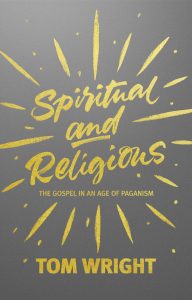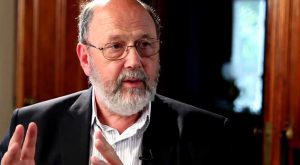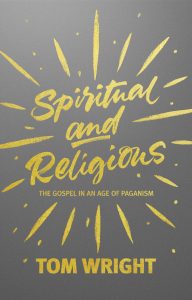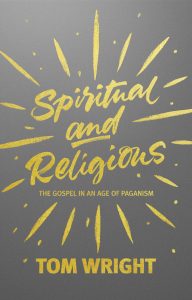Greetings from out West in the great city of Denver Colorado. I was asked to speak at a conference for Christian business people in Colorado and I also got to present two workshops, about the value of reading, the need to develop the Christian mind, and offering a bibliography of titles which contribute to the on-going conversation about faith, work, vocation, calling, and, specifically, business practices and Christian engagement with economics. I regret that I only scratched the surface, and missed saying some important things, but that is what the books are for – to allow people to more slowly, carefully, read for deep formation and to “take every idea captive” for Christ’s Kingdom as we are called to do (Romans 12:1-2, Colossians 2:8, 1 Corinthians 10:5.)
I spoke a lot about rejecting what some call the “sacred vs secular dualism” and invited the workers gathered there to realize their work was holy ground, that what they did matters, and can honor God if done for the common good, stewarding vocational gifts, showing the goodness of God by creating products and services that show love of neighbor. I wish I had a list of the jobs people had, but I know there were big business owners, small -town retailers, building contractors, business lawyers, industry experts, consultants, corporate executives, factory managers, entrepreneurs, mining specialists, realtors, financial advisors, hedge-fund investors, mid-level managers, members of marketplace ministries, and a even few ministers.
I will publish the bibliography I put together for these business professionals soon, here at BookNotes. I have to focus now on this new post, though, which may be dicey, between my jet lag and altitude sickness (yes, it’s a real thing) and spending some time with one of our daughters who lives here and is showing us the artsy side of town (move over Brooklyn, Denver’s River North District, known here as RINO, is the up-and-coming hipster center of the known universe. What a colorful, creative place. And we get to go to House for All Sinners and Saints, a Lutheran faith community where we’ve worshiped before and a place we deeply love.)
In the middle of this important speaking engagement and this bit of family vacation, I still want to tell our Hearts & Minds BookNotes friends about some brand new books. I hope you saw the previous BookNotes blog which listed 20 titles about Jesus. Let’s face it – formational Christian reading must be Christ-centered, so that may be one of the most important BookNotes I’ve done in a while.
The two titles I want to tell you about now are splendid and do tie in to our experience here with the Colorado Christian Business Alliance and will be helpful for any other Christian social action and cultural renewal ministries that long for God’s Kingdom to be seen in every area of life.
My theme today is simple, and I won’t say too much. (Did I mention the altitude sickness? And the cool places our daughter is taking us?) We’re very excited about two books that just came out that are, actually, older previously out of print books now re-issued in somewhat revised and updated editions.
TWO FABULOUS, PREVIOUSLY OUT OF PRINT BOOKS NOW RE-ISSUED
These are two truly favorite books that have been out of print for decades and are now, this week, back in print again. Thanks be to God to the authors and publishers involved, bringing two tried and true (if under-appreciated) volumes back to the reading public. You, friends, should snap these up right away as they are true gifts, and truly vital resources for your life and times. Dare I say they are good for your hearts and minds?
 Spiritual and Religious: The Gospel in an Age of Paganism Tom Wright (SPCK) $15.00 This book is worth twice the price and we should rejoice that the sophisticated British publisher, SPCK, is now being distributed into North America by InterVarsity Press. (This is yet another feather in the bright cap of the always thoughtful and relevant IVP, our favorite publisher.) Tom Wright? A re-print by a publisher in the UK? Yep, you figured it out: this author is the world-famous and world-class Anglican theologian and Bible scholar otherwise known to the publishing and reading world as N. T. Wright. Many folks know he goes by Tom, and some of his earliest books were published under his more friendly name, Tom. So, for those who haven’t followed him from the very, very beginning, this is essentially a brand new N.T. Wright book. Come on, people, get on the train – this is gospel good news, solid and still creative, orthodox without being stuffy, Biblical and yet, as serious Bible reading should be, finally, revolutionary. Although published in the very early 1990s, this is for most a brand new N.T. Wright book, and as timely as ever!
Spiritual and Religious: The Gospel in an Age of Paganism Tom Wright (SPCK) $15.00 This book is worth twice the price and we should rejoice that the sophisticated British publisher, SPCK, is now being distributed into North America by InterVarsity Press. (This is yet another feather in the bright cap of the always thoughtful and relevant IVP, our favorite publisher.) Tom Wright? A re-print by a publisher in the UK? Yep, you figured it out: this author is the world-famous and world-class Anglican theologian and Bible scholar otherwise known to the publishing and reading world as N. T. Wright. Many folks know he goes by Tom, and some of his earliest books were published under his more friendly name, Tom. So, for those who haven’t followed him from the very, very beginning, this is essentially a brand new N.T. Wright book. Come on, people, get on the train – this is gospel good news, solid and still creative, orthodox without being stuffy, Biblical and yet, as serious Bible reading should be, finally, revolutionary. Although published in the very early 1990s, this is for most a brand new N.T. Wright book, and as timely as ever!
Spiritual And Religious was previously published in the U.S. by Bethany House (now part of the Baker Publishing Group) as Bringing the Church to the World and although we were young booksellers in those days, Beth and I loved this book. It had the quintessential look of a late ‘80s/early 1990s pop Christian book and was released by a publisher who in those years was known for some pretty intense deeper life revival writings of the likes of Andrew Murray, Leonard Ravenhill, and Charles Finney, re-publishing the extraordinary Victorian-era, Scottish novels by George MacDonald (CS Lewis’s great literary mentor) and the rather simplistic but hugely popular historical fiction of the likes of Janette Oke. My dear mother and many of our customers loved those pious prairie romances, despite the awful covers. In the middle of a list of Christian fiction and somewhat old-fashioned Christian growth stuff was the first U.S. book by a then unknown British author named Tom Wright.
I understand why that book, Bringing the Church to the World, wasn’t popular in those years. It just fell through the cracks. Serious emerging thinkers in those days, discovering early works of Moltmann and Brueggemann, say, or even the best mainstream evangelical thinkers (reading the first books of Eugene Peterson or Francis Schaeffer and John Stott and Ron Sider and the likes of Lewis, Sproul, and Colson) just weren’t reading books by that publisher with those covers, nicely designed for the popular Christian self-help market. Mainline denominational pastors and thought leaders in United Methodist, Lutheran, Episcopalian, or Presbyterian circles who didn’t frequent the ubiquitous mom and pop Christian bookstores in those days, simply didn’t know this book existed.
And, it might have been ahead of its time. With the “spiritual but not religious” lingo these days, and this movement of post-Christian spirituality, Tom Wright’s insights about the nature of paganism, true spirituality, the longing for some sense of God’s presence, is, in fact, perfect for these days. The book – missional at its core, culturally-wise in its discernment about the times – was strong and would have been very useful in the midst of what we then called the “new age movement” – wiser, I think, then some of the alarmist over-reactions. In the first Bethany House edition, it had emblazoned on the front, as a long sub-title, “Renewing the Church to Confront the Paganism in Western Culture.” It carried a great endorsement by J. I. Packer. And yet it languished.
Now, with the new SPCK edition’s title, Spiritual and Religious… is even more urgent as the goofiness of the worst of that neo-pagan movement has subsided and the best insights (legitimately offering alternatives in medicine and psychology and politics to old-school, Western style materialism based on Enlightenment sorts of rationalistic paganism) have become more mainstream. But with many fine churches — mainline liberal or evangelical mega-church or medium-moderates — still not quite getting where the culture is these days, it is no surprise that so many younger adults (and older ones, too, I might add) see themselves as “spiritual but not religious.” As You Lost Me by David Kinnaman (and several other more scholarly books on the “nones” such as Belief Without Borders by Linda Mercadante or Choosing Our Religion by Elizabeth Drescher) show, not all of the young adult population that don’t attend church are atheists or hostile to faith; some see themselves as deeply spiritual, and some see themselves as truly Christian, avoiding religious institutions that, in their mind, has little to do with Jesus and His ways in the world.
And so, N.T. Wright comes along, digging up this old assessment of the spirit of the times from the new agey 80 and 90s and re-thinks that material, offered in that under-appreciated book, and re-purposes it for missional Kingdom outreach and authentic Biblical spirituality in our 21st century post-Christian, newly pagan culture. What a great idea to re-edit and re-issue that important volume.
Wright’s Spiritual and Religious is arranged in two parts.The first half (less than 100 pages) includes seven short chapters exploring the modern world and offering good prompts for how the church fits into this idolatrous secular worldview. Many of you know that one of my favorite books is The Transforming Vision by Brian Walsh & Richard Middleton (and that these two were young bucks living in Canada when Tom was at McGill University in Quebec, and they became friends. I happen to see the fingerprints of Transforming Vision all over this book, especially in its potent critique of the gods of the age, including mammon, militarism and the like. However, this is not dry intellectual history or liberal social criticism – although there is some stuff about the history of ideas and a critique of well-accepted idols of our time. But mostly, this is Kingdom theology, a missional vision of the vindicated, Risen Christ and how the church simply must relate the good news to the culture around us.
The second half of Spiritual and Religious: The Gospel in an Age of Paganism looks like a wonderful overview of much of Wright’s best stuff on missional thinking, strategies for engaging the culture and its distorted views and hurtful practices, and how to present the Kingdom alternative to those who remain hungry for meaning, eager for beauty, longing for justice. How can those who are commissioned to be Christ’s ambassadors of God’s Kingdom related well to those who may not see the message of the church to be life-giving or admirable? How can we be the church for the sake of the world God so loves?
 I loved this book when it first came out, although we didn’t then know who Tom Wright was as an evangelically-minded but somewhat socially progressive Anglican priest in the UK, nor what he was working on, offering fresh expressions of the church for the world in those hard years in England, and what he would become – the generative, prolific scholar of prodigious, and sometimes ponderous output making him one of the most important writers of our time. We did not know that he would give reasonable voice to so much that we stood for, explaining in helpful ways our own curious theological influences and the vision of Hearts & Minds as a Christian bookstore. I didn’t realize then that he would eventual become a bit of a friend and supporter and show up to preach in our back yard.
I loved this book when it first came out, although we didn’t then know who Tom Wright was as an evangelically-minded but somewhat socially progressive Anglican priest in the UK, nor what he was working on, offering fresh expressions of the church for the world in those hard years in England, and what he would become – the generative, prolific scholar of prodigious, and sometimes ponderous output making him one of the most important writers of our time. We did not know that he would give reasonable voice to so much that we stood for, explaining in helpful ways our own curious theological influences and the vision of Hearts & Minds as a Christian bookstore. I didn’t realize then that he would eventual become a bit of a friend and supporter and show up to preach in our back yard.
Beth and I loved that book, even if we didn’t sell it well. I might have been biased by not realizing who he was, not “placing” him because of my own assumptions about the theological nature of that US publisher in those years. I don’t know. Nobody else did, either, I guess, as the book languished, unknown, and soon enough went out of print. I have felt badly about it for years. What a joy to now have a second chance, to re-sell this book, to promote it widely, and hope that its message equips churches with visions and strategies to embody a prophetic imagination, learning to say no to the ideologies of the Western, secularized culture, and the oddly-focused, inner spiritualties of the newer generations, and hold out a classic, orthodox, vibrant vision of being deeply spiritual and culturally relevant – the best vision of religion as a way to life well lived.
(And, just to be clear for those that wonder: Wright does not, in his passion for ministering to the world, for being engaged in the struggle for ideas and attitudes that shape our modern lives and institutions and culture, recommend “watering down the distinctives of the faith in order to make it more palatable.” No, no, not at all. He is not an old-school liberal, wanting to accommodate ourselves to the world, in order to unite “Christ and culture” somehow, being like the world to be accepted by it.That is a large misunderstanding, if anyone presumes that. Neither is he a fundamentalist, a crass theocrat as represented by the Christian right in the US, a movement which he finds intolerable (as do, by the way, almost all evangelical Christians around the globe, perplexed and saddened by the odd ways American fundamentalists are so nationalistic.)
It is fascinating to me that those who see themselves as progressive theologically sometimes think Tom is too conservative and many conservatives find him to be questionable. When one find as author and leader who is blasted by both extreme sides, it may be that that is an author to consider. How wonderful!)
So, again, this short book is about the nature of the modern culture, underscoring its essential idolatries as a form of paganism. The communities of ancient Israel had to struggle to resist the idols of their surrounding cultures, of course, and the early church’s very survival depended on its proper engagement with the pressures of the pagan worldviews. This books helps us do what the church is always called to do.
Tom Wright puts it, plainly, in the introduction:
I believe that our current society presents a new set of challenges to the church. These are significantly different from the challenges that Christians have perceived, and responded to, in recent decades. Fortunately, although these challenges are new to us, they are not totally new in themselves, and we are able to draw on wisdom from the past in addressing them.
This book reminds us, too, that there are many movements of renewal within the churches in recent years that can be wisely harnessed, combined, drawn upon, to empower us for this significant contemporary challenge.
For instance, he says that:
There has been a renewal of Christian interest in ecumenism, in liturgy, in the Holy Spirit, in biblical study, in social and political action, and many other things. Taken by themselves, these movements can become hobbyhorses of single-issue fanatics, while the rest wonders what the fuss is all about. But give the church a new sense of direction, a new vision of the challenges that it now faces, show it that, to meet these challenges, it needs to draw on the best of all these renewal movements have to offer; and instead of being the hobbyhorse of a few they become instead the resource-kit of the many. There are new tasks facing us, and a renewed church can face up to them in the knowledge that, through the wise provision of her Lord, she is in principle equal to them.
“Ultimately, if the church is to be the church for the world,” Wright writes, “it must recapture a vision of the God is the true God.“
His hope in this fine little old book offer afresh is that if the church is going to be prayerful and thoughtful and relevant and missional – that is, if our message is to be effective and hammered out in practice and make sense to the watching world – it will “constantly celebrate and announce the lordship of Jesus in appropriate, constructive and telling ways.” Isn’t that a nice line? I hope you can see why we here at the bookstore resonate with this classic, pioneering, early vision of N.T.–Tom — Wright.
To make the book more usable, Wright has good discussion questions at the end of each chapter, making it ideal for book groups, Bible studies, adult ed forums and the like. There is a brand new chapter, written as an epilogue, suggesting one particular prayer, a way of praying it, that picks up the major themes of the book. He says, actually, that you might want read that chapter first, allowing it to “pervade and deepen the reading of the rest.”
We – we here at the shop, but other bookstores, reviewers, publishing ministries and book-buyers — blew it last time, not promoting this book enough; it should have been a widely-read, regularly-cited, contemporary classic. Thanks be to God that we have another chance. Let’s make this book known and its hopeful insights applied so that we can, indeed, be a church for the sake of the world.

 Venite: A Book of Daily Prayer Robert Benson (Abingdon Press) $18.99 Again, this is a book that almost came and went in a flash, back in the last century. There was a fresh re-issue in 2000, actually, but it didn’t last, either. As with the Tom Wright book above, we feel, personally, badly about this. Why we didn’t sell more of this lovely, meaningful, useful book in those years I cannot say. That the evangelical book world wasn’t ready for a liturgical resource to help people pray the offices or celebrate the liturgical season is an understatement. Like Taking the Church to the World it was ahead of its time. Unlike that one, the title has remained.Venite. I’m glad. The back cover of this handsome paperback explains,
Venite: A Book of Daily Prayer Robert Benson (Abingdon Press) $18.99 Again, this is a book that almost came and went in a flash, back in the last century. There was a fresh re-issue in 2000, actually, but it didn’t last, either. As with the Tom Wright book above, we feel, personally, badly about this. Why we didn’t sell more of this lovely, meaningful, useful book in those years I cannot say. That the evangelical book world wasn’t ready for a liturgical resource to help people pray the offices or celebrate the liturgical season is an understatement. Like Taking the Church to the World it was ahead of its time. Unlike that one, the title has remained.Venite. I’m glad. The back cover of this handsome paperback explains,
The Latin word is an invitation given to pray the prayers of Christ. It is an invitation to pray the ancient prayer, unlike life becomes prayer without ceasing.
I won’t bore you with the long story of our own coming to appreciate liturgical prayer and my own love-hate relationship with fixed-hour prayers. In my long review a decade ago of Robert’s beautiful book In Constant Prayer I said, very, very sincerely, that I was deeply moved and genuinely blessed by reading about fixed our prayer, using the office as a guide to praying throughout the day. But that I just wasn’t going to do it. I think that is fair enough – I like books about global missions even though I’ve never left the continent and I loved Benson’s book on baseball and his book on gardening and his book on vacationing in the Caribbean, even though I have done known of those things. Still there is something about reading about fixed hour prayer, something about having a resource like the classic Book of Common Prayer, but less cumbersome, to have these litanies and prayers and curated verses and spaces to pause and intercede and praise…. even if I don’t use it strictly as a prayer book as I should.
Two things have happened in this general area since we opened our bookstore almost 35 years ago. The people who protested and boycotted our store because we carried books about contemplative spirituality and Christian books about meditation – what a story! — have either apologized or drifted away. That is, within the evangelical Protestant world there has been a huge re-awakening to the benefits of spiritual disciplines and contemplative, monastic spirituality. When I give presentations on the shifts in religious publishing in recent decades, this is one of the largest we’ve seen, and we can pretty confidently name the writings of Richard Foster and Henri Nouwen as two popularizers of this rich tradition of classic spirituality. Of course both Foster and Nouwen drew deeply on the wells of the medieval traditions, but both popularized the dense stuff about contemplative prayer written by the hugely significant literary and religious figure, Columbia University atheist turned silent monk, Thomas Merton. That I worked for a spell at the mostly Roman Catholic Thomas Merton Center before we opened our bookstore might help you understand why we opened with a then-rare section on contemplative spiritual formation, shelving books old and new on this stuff about our interior lives and the prayerful habits that transform us from the inside out, allowing us to “practice the presence of God.”
In most of his wonderfully written, highly-recommended books – I think of Living Prayer and Between the Dreaming and the Coming True and his most-recent, truly lovely, Punching Holes in the Dark – Robert Benson shares this story that nearly parallels just a bit of my own, except his is more colorful, writ large. He grew up within the heart of  American evangelicalism and Southern revival zeal, his grandfather and father being the Benson’s of the famous Benson gospel music record label. (If you’ve heard of the Bill Gaither Trio, you know who I mean.) Robert, as he explains in detail in his lovely book about discerning one’s own vocation, The Echo Within: Finding Your True Calling,realized he wasn’t cut out for the music biz; in fact, he wasn’t part of that evangelical/revivalist tribe anymore, anyway. As much as he deeply, deeply admires his father (who didn’t?) and as much as he appreciates the gospel clarity he was rooted in during those formative years, he is a liberal Episcopalian now, a writer who offers humble retreats about praying and living in the light of God’s gracious mercy. His faith might seem more simple, now, as he lives quietly, writing gentle books, and praying the hours, even as he studies the great spiritual classics of the Western (and, too, some of the non-Western spiritual traditions.) So, anyway, Benson is an example of this shift we’ve mentioned about how evangelical Protestants have discovered the ancient disciplines that the monks and nuns have written about for centuries — contemplation, meditation, mysticism and the like.
American evangelicalism and Southern revival zeal, his grandfather and father being the Benson’s of the famous Benson gospel music record label. (If you’ve heard of the Bill Gaither Trio, you know who I mean.) Robert, as he explains in detail in his lovely book about discerning one’s own vocation, The Echo Within: Finding Your True Calling,realized he wasn’t cut out for the music biz; in fact, he wasn’t part of that evangelical/revivalist tribe anymore, anyway. As much as he deeply, deeply admires his father (who didn’t?) and as much as he appreciates the gospel clarity he was rooted in during those formative years, he is a liberal Episcopalian now, a writer who offers humble retreats about praying and living in the light of God’s gracious mercy. His faith might seem more simple, now, as he lives quietly, writing gentle books, and praying the hours, even as he studies the great spiritual classics of the Western (and, too, some of the non-Western spiritual traditions.) So, anyway, Benson is an example of this shift we’ve mentioned about how evangelical Protestants have discovered the ancient disciplines that the monks and nuns have written about for centuries — contemplation, meditation, mysticism and the like.
However, Benson’s Veniti: A Book of Daily Prayer did not exactly emerge, or only emerge, from his shift away from older school Protestant fundamentalism and embracing a more ecumenical, reflective faith, but it also comes from his discovery of the vital role of liturgy and the joys and rigors and rhythms if fixed hour prayer. Again, about the time in the 1980s when evangelicalism, and, eventually, mainline liberal Protestant churches, dropped their guard about Catholic mysticism and started reading Nouwen, and then Merton, there was also a trend of rigorously orthodox evangelicals who longed for more mystery and ancient connections in their zealous but perhaps shallow faith. There were in those years a few books written (still in print today, by the way) explaining this, such as Evangelicals on the Canterbury Trail: Why Evangelicals Are Attracted to the Liturgical Church,which documented conservative non-denominational Christians, many young, leaving their Jesus-movement, Maranatha Music, low-brow worship services and becoming — miraculum — Episcopalian. We see this in the important work of Robert Webber and his “ancient future” project, combing contemporary interests and ancient liturgies, combined in rich aesthetics. We see this trend especially these days as many conservative Reformed folks leave churches like the PCA to become Anglican, a more conservative and evangelical version of the American Episcopalianism.
I do not know this, but I suspect it is the good marketing folks at Abingdon Press who sense that the time is right to re-introduce this lovely,(originally) hand-made Benson prayer book. If it was ahead of its time – the wave of contemplative spirituality and the interest in higher liturgical forms was still growing twenty years ago — but the time couldn’t be better for this very handsome, user-friendly, slim-line prayer book.Those that knew it decades ago will rejoice that it is out again; it was sort of an underground classic., truly cherished among a small, glad crowd. Now it might become a mainstream best-seller. One can hope.
For what it is worth, Benson has two very, very nice introductions to Venite giving you background as to how he came to write this and in his piercing, concise prose, tells you why it matters so to him. He also guides you through using it well, noting some of the helpful features.
I cannot now explain the details but it is nice that somebody like Robert Benson, who obviously uses and is fluent in the Episcopalian Book of Common Prayer and the conventional Roman Catholic Book of Divine Offices and other odd little prayer books is so willing and able to create a more streamlined and simple-to-use prayer book. There is a glossary in the back explaining often used words (lauds, compline, canticles, remembrances, etc.) He has a short essay on the liturgical calendar. That is, if you need a bit of a guide or mentor into this sacramental worldview and the practices of daily liturgical prayer, If you like the late Phyllis Tickle volumes – she and Benson were pals, naturally – you will love this. If you want a guide to pray which you can use routinely through the day, or just to dip into on occasion (all that my cheating heart can manage) Venite will draw you deeper and wisely guide you towards this fixed-hour sort of habit.
The first large portion of Venite is on saying the Office; that is, praying the fixed hours throughout the day, as people (mostly monks and nuns, but not only them) do throughout the day.
The second major section of Venite is on saying the Prayers of the Seasons; that is, special prayers for the church calendar, from Advent through special holy days, feast days, and well known seasons such as Lent. (And, yes, in the Advent portion he has the O Antiphons, making it nearly the price of the book for that.)
And, so, like with the Tom Wright book, above, Robert Benson remains a favorite author, one whose books we stock and promote as best we can. And, like with Spiritual and Religious by Wright, with Veniti by Benson, we now have chance to introduce to their fans, and to those who don’t know their work, an older, rich, early volume, re-edited and re-shaped for a new audience.

We couldn’t be happier than to have these kinds of books to sell, books by Wright and Benson and others they so maturely draw upon. But these two are special – old classics that maybe didn’t catch on as they should have, given fresh designs and new insights, and, hopefully, new readerships. Will you help us spread the word about these two newly re-issued resources. It is not my altitude sickness speaking here, it is God’s good word, from my heart to yours: these books deserve to be widely known.


BookNotes

special discount
10% off
order here
Takes you to the secure Hearts & Minds order form page
just tell us what you want. We will confirm everything.
inquire here
If you have questions or need more information
just ask us what you want to know. We’ll reply promptly.
Hearts & Minds 234 East Main Street Dallastown, PA 17313
read@heartsandmindsbooks.com
717-246-3333
